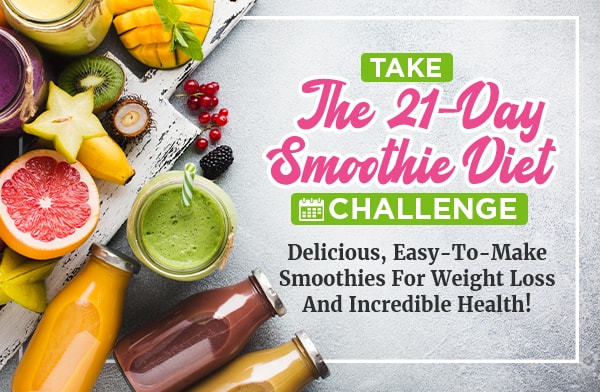Myth Busting: Is It Possible to Drink Too Many Smoothies?
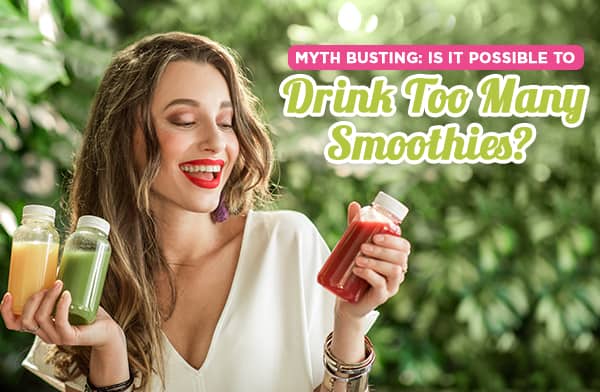
When you’re considering a diet plan like the Smoothie Diet, you might be wondering if it’s dangerous or detrimental to keep it up. Could there be a physiological reason not to drink smoothies every day? How long is it safe? Well, let’s dig into the question.
The Purpose of the Diet
First of all, let’s take a look at the purpose of the smoothie diet.
My 21-day smoothie diet exists for one reason: to help you lose weight.
It does this in two ways. The first is by restricting your caloric intake. Weight loss is, when you get right down to it, a matter of math. Your body needs a certain number of calories to function on a daily basis. If you consume more calories worth of food than you need, the excess is partially stored away as fat throughout the body. You can think of it like charging a battery. Then, when you encounter a day where you consume fewer calories than you need, that stored energy is pulled back out and used.
Weight loss is all about adjusting this equation. You can burn more calories and lose weight, and you can take in fewer calories to lose weight; either one works. The best option is to do both, but I’m here promoting a diet, not an exercise plan. I’ll leave that part to you to find one that works.
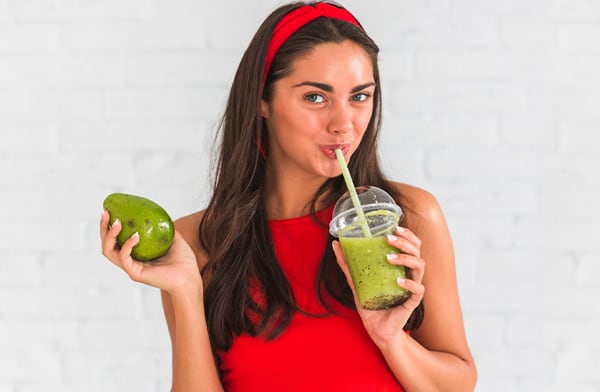
A typical smoothie made out of fresh fruits and vegetables will have around 200-400 calories. Your body, in general, will need around 2,000 calories per day. This number varies depending on your gender, age, physical activity levels, current weight, and more, so I recommend using a calculator to estimate your maintenance rate.
The smoothie diet replaces two meals a day – generally breakfast and lunch – with smoothies. Since both breakfast and lunch are typically higher in calories than the smoothie is, you end up eating less throughout the day. The smoothie also helps you cut back on snacks, particularly unhealthy snacks and things like soft drinks and juices that pack in the sugar.
The second purpose of the smoothie diet is to help you cut back on unhealthy sugars, processed ingredients, fast food, and other snacks that are terrible for your health. Since the smoothies are all made with natural, healthy ingredients like whole fruits and vegetables, it’s a lot better for your body. You get more vitamins and minerals, you get fewer short-chain carbohydrates and other processed stuff your body doesn’t like.
The smoothie diet, then, serves two purposes. It’s a temporary crash diet to kick off some initial weight loss, and it’s a long-term dietary change meant to help you cut out unhealthy ingredients and habits that are holding you back.
The Risks of Smoothies
Smoothies are a very good option for a meal replacement, but they aren’t necessarily perfect. They have a few potential drawbacks.
First of all, it’s important to remember that a smoothie is only as healthy as the ingredients you use to make it. A lot of smoothies you get from local chain stores use powders, flavored syrups, a bunch of ice or dairy, and not a lot in the way of whole fruits and vegetables. They end up loaded with just as much sugar as a soft drink; it’s like drinking candy.
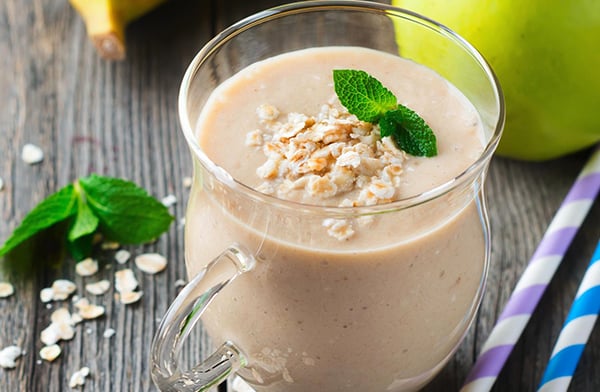
On the other hand, making a smoothie yourself using whole fruits and vegetables and a healthy base means you’re getting a ton of beneficial nutrients. It’s all about what’s in the smoothie, which is why I have a whole plan with recipes, shopping lists, and substitutions to ensure that you have plenty of flexibility without resorting to sugary additives.
There are also a handful of possible side effects to smoothies, particularly if you’re striking off your own and making your own recipes. My recipes are designed to help minimize them as much as possible, but these are some of the things you might watch out for.
You might experience digestive issues.
The biggest issue here is that smoothies are mostly liquid. Since you blend up the ingredients before you drink the smoothie, you don’t have the luxury of chewing your fruits and vegetables.

Digestive distress can occur for four reasons.
- Too much fiber in the smoothie, which absorbs water and forces material through your digestive system faster.
- Too much liquid with too little substance. This means ingredients pass through your stomach faster than normal. That’s why I use more wholesome ingredients like greens in every smoothie.
- A reaction to fresh produce. Some people find that large amounts of fresh produce can cause a digestive upset. You may need to work around different recipes until you find the ingredients that cause you problems.
- You’re eating nothing other than the smoothies you drink throughout the day. Fortunately, the smoothie diet is not an ALL smoothie diet; I still encourage you to eat a whole foods dinner and a couple of healthy snacks throughout the day to give you more substance to your diet.
Most of the time, these digestive issues are actually a result of the shift in diet from whatever you were eating before to a smoothie-based diet and have little to do with the smoothies themselves. By the time you’ve completed my 21-day program, you should be past those issues, and your digestion will have stabilized.
Smoothies are easy to make too big.
Since it’s really easy to make and drink a smoothie, it’s also really easy to make one that’s just too large. Since one of the goals of the smoothie diet is to cut calories, making a smoothie larger and larger will add more and more calories, and make it harder to lose weight.
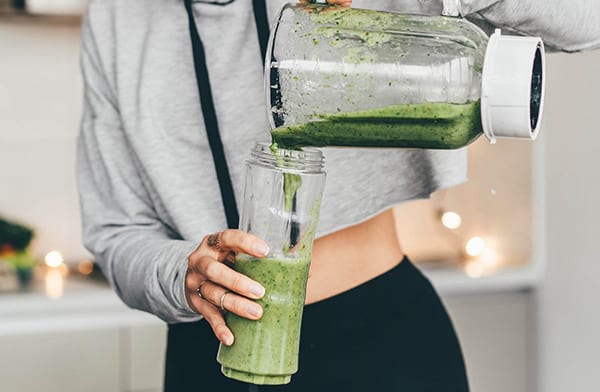
My solution to this is to provide you with specific measurements for each ingredient you add to your smoothies. They’ll be a consistent size if you make them with consistent portions of each ingredient, and you won’t have to worry about scope creep.
If you’re concerned about sticking to portion sizes when you make your smoothies each morning, you have options. For example, you can portion, prepare, and freeze your ingredients into a smoothie freezer pack ahead of time, or you can make your smoothies in larger portions and save some for later.
You might not feel full or sated.
One of the biggest hurdles to overcome with smoothies is that they’re simple and easy to drink. Many people drink their smoothies quickly. The trouble is, your digestive system has a delay on it between when it gets filled up and when it tells your brain it’s full.
This is why a common piece of advice is not to eat until you feel full, but eat until you no longer feel hungry. Because, by the time your body is sending one signal, you’ve moved beyond it.
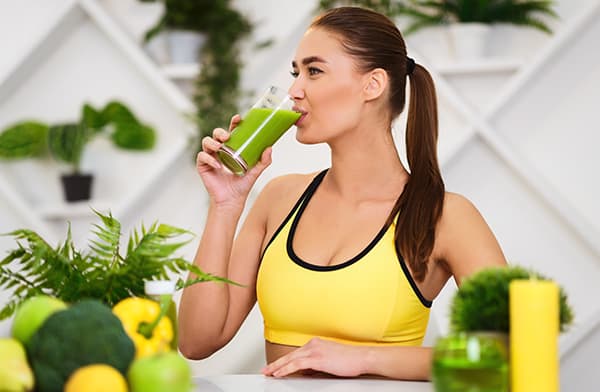
With smoothies, there’s a self-control risk. You drink the smoothie, and you’re left feeling unsatisfied by the portion. You might be tempted to then sneak in an additional snack, and that adds more calories and makes it harder to lose weight.
Luckily, this is often temporary. Once you get used to replacing breakfast and lunch with smoothies and supplementing them with a couple of small, healthy snacks, you’ll be able to stabilize your cravings. In particular, once you “detox” from processed sugar and high-fructose corn syrup, you’ll be much better off.
Specific Conditions and Concerns
There are also a few reasons why a smoothie diet might not be ideal for you. Largely, these boil down to whether or not you have existing health conditions that you need to watch. I fully and readily admit that, while I’m a huge proponent of smoothies to help kick off weight loss, a smoothie diet isn’t perfect for everyone.
If you suffer from kidney disease, smoothies can be risky.
Kidney disease is distressingly common, and it’s difficult to control. You often need to carefully manage your potassium, sodium, and calcium levels to avoid putting your fragile organs more at risk than they already are. Unfortunately, smoothies are full of these kinds of ingredients, especially if you’re using a potassium-rich green like spinach.

Additionally, leafy greens are full of the compound oxalic acid. Oxalic acid is usually passed through the digestive system harmlessly, but in people with sensitive kidneys, it can stick around and accumulate. This forms into kidney stones, which are extremely painful. You can still enjoy smoothies if you consider your ingredients carefully, but those considerations are not built into the smoothie diet itself.
If you take certain medications, some smoothie ingredients should be avoided.
One of the most well-known foods to interact with medications is grapefruit, which can cut down on the half-life of some medications and make them process through your system faster. Of course, grapefruit isn’t a common smoothie ingredient. Some ingredients are, though, and can have an impact.
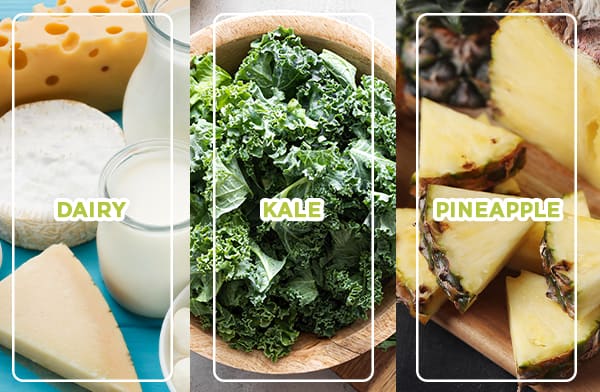
The interactions these ingredients can have include:
- Dairy can bind to some antibiotics and reduce their uptake into your bloodstream. The smoothie diet largely avoids straight dairy since it’s high in sugar, but it’s something to keep in mind.
- Kale interferes with a few specific medications, including warfarin, which is a blood thinner. Specifically, it’s the vitamin K found in kale, which can also be found in some other greens. I offer several different greens you can use instead, however.
- Pineapple can interact with and interfere with medications like benzos used to treat depression and anxiety. It can also react to some antibiotics.
If you’re on any specific medications, especially long-term medications, make sure to talk to your doctor about specific fruits, vegetables, and nutrients you need to manage or avoid to ensure that your medications still work.
If you have diabetes or pre-diabetes, smoothies can be dangerous.
People with diabetes generally need to watch their carbohydrate intake and balance it out with other nutrients to keep their blood sugar in check. Smoothies can be nutritionally balanced, especially if you use smoothies like mine that are low on sugars and high on healthy fibers and other nutrients.
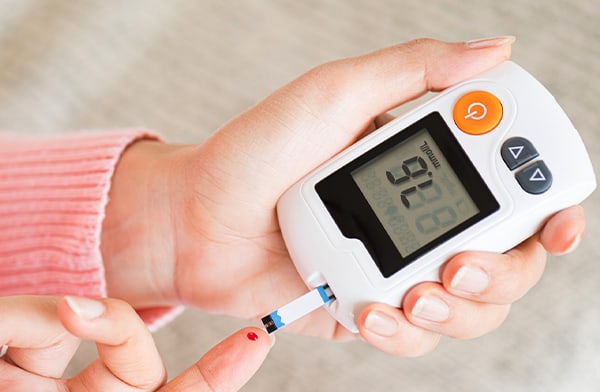
The risk comes from the abrupt change from your normal diet to the smoothie diet. As a sudden “crash”-style diet, it’s mostly all-or-nothing, so you don’t get the chance to ease into it. This can make the careful balance of blood sugars skew wildly and can cause all kinds of problems.
Thankfully, you don’t have to treat it like a crash diet. You can start by replacing a single meal with a smoothie and see how it does, and then replace a second meal later, once you’ve adjusted.
Is It Possible to Drink Too Many Smoothies?
Sure. It’s possible to get too much of anything, no matter what that anything is. It’s all a matter of scale and balance. Even too much water too quickly can cause water intoxication and even death in the extremes, and water is essential to life.
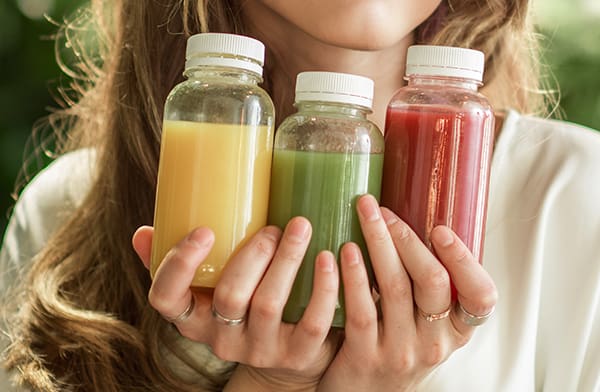
The truth is, the smoothie diet is a balanced diet. It’s not replacing every meal you eat with smoothies, and it’s not replacing every nutrient group with just dairy and fruits. The smoothies I recommend are well-balanced and rounded, including everything from nuts and nut butters to fresh fruits to leafy greens and other healthy vegetables. They allow you to cut out unhealthy processed foods, bad fats, and excess sugars, and replace them with healthier nutrients across the board, all while cutting calories.
More importantly, the smoothie diet still encourages you to eat a healthy, whole foods dinner, so you still get your time spent eating, your chewing, your slower digestion, and a meal where you can eat nutrients that aren’t easy to get in smoothies, like lean meats.
Everyone reacts differently to changes in diet. It can relate to everything from your previous diet, to your current health, to your genetics. The smoothie diet isn’t for everyone. That said, I firmly believe it can be beneficial for nearly everyone without extenuating circumstances, and you’ll be able to see dramatic improvement if you just give it a try.
Do you have any other questions about smoothie intake, the Smoothie Diet, or anything else smoothie-related? If so, please feel free to reach out and contact me! I would love to assist you on your smoothie journey however I possibly can!
